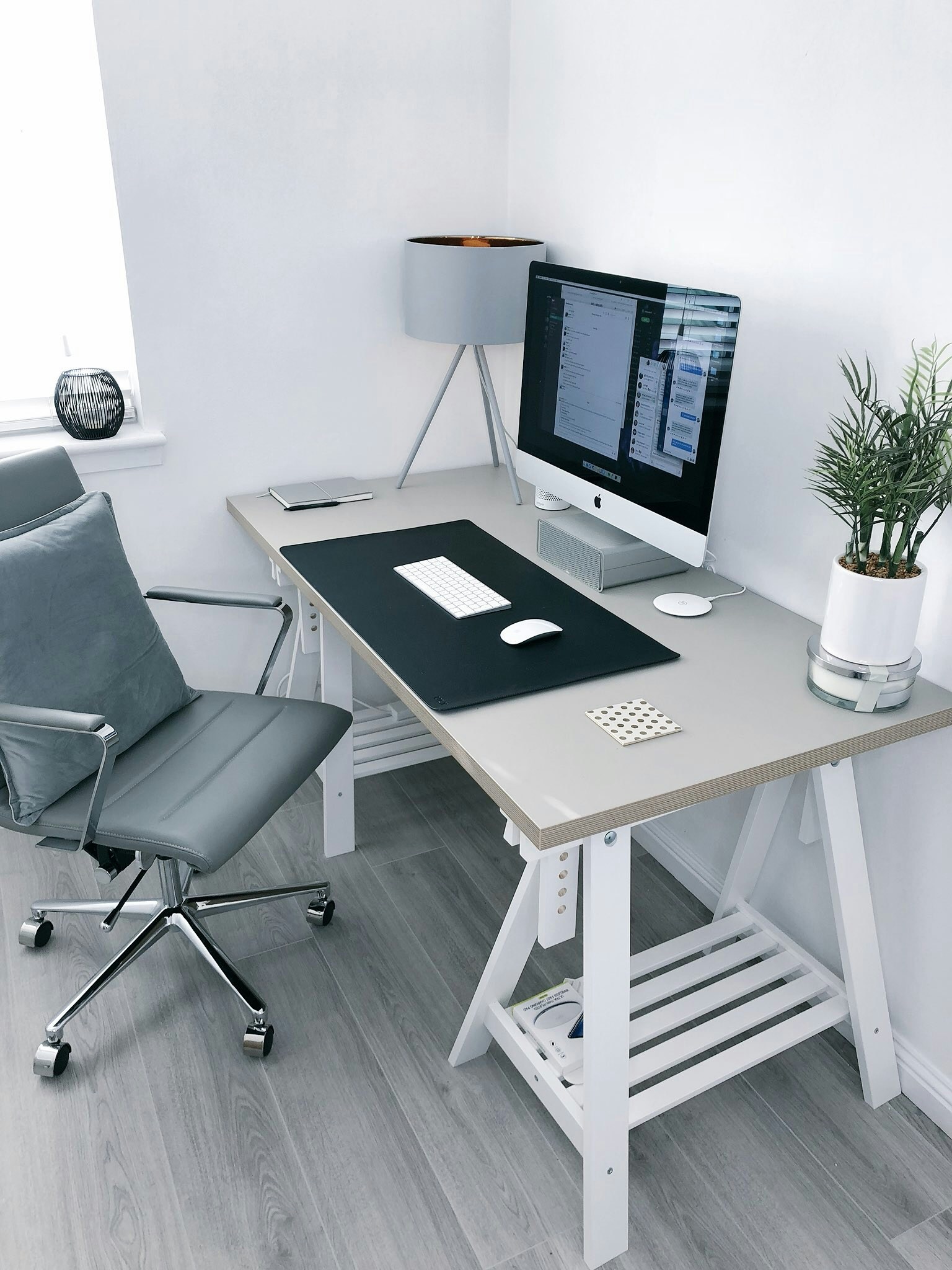In the wake of the Covid pandemic, the work-from-home model shifted from a rare convenience to a widespread necessity. This transition not only preserved safety but also maintained productivity across various sectors, proving that many jobs can be done effectively from home. For those accustomed to the ultra-short commute from one room to another, returning to traditional office spaces seems less appealing. As remote work becomes more of the norm, the initial makeshift workspaces—like dining rooms or corners of bedrooms—are no longer sufficient.
To ensure long-term comfort and efficiency, creating a dedicated, well-equipped home office is essential. Designing this space involves more than just setting up a desk; it’s about creating an environment that promotes productivity and wellbeing. Whether you have an entire room to dedicate or just a small nook, optimizing your home office with the right tools, furniture, and design elements is key to building a space that truly enhances your work-from-home experience.
Table of Contents
ToggleDesignating Your Workspace
The first step in creating an effective home office is dedicating a specific area for work. This space should ideally accommodate all necessary equipment and provide a level of separation from household distractions. For those with limited space, innovative solutions like transforming a guest room with a Murphy bed, converting a large closet, or even repurposing a garden shed can be ideal. The key is to establish a clear boundary between work and personal life, enhancing focus and organizational efficiency.
Custom Woodworking and Furniture
Incorporating custom woodworking can significantly enhance the functionality and aesthetics of your home office. Custom wood desks, shelving, and cabinetry can be tailored to fit your specific spatial and storage needs, ensuring that every inch of your home office is utilized efficiently. These bespoke pieces not only serve practical purposes but also add a touch of personal style and craftsmanship to your workspace.
Optimal Lighting
Proper lighting is crucial in any workspace to prevent eye strain and create a conducive working environment. Indirect lighting that doesn’t shine directly on your computer screen or create glare is ideal. Consider installing adjustable blinds or shades to control natural light from windows. Adding overhead lighting and task lamps with dimmable options can help maintain the right balance of illumination, ensuring that your workspace is neither too bright nor too dim.
Ergonomic Seating
Investing in a good office chair can have a significant impact on your comfort and health. Ergonomic chairs with adjustable height, lumbar support, and armrests are vital to maintain proper posture and avoid back problems. It’s best to try out chairs in person to find the right fit rather than risking an online purchase that might not meet your needs.
Solid Writing Surfaces
A sturdy desk or work surface is essential for a productive home office. Whether it’s a custom-built desk designed to fit your space or a versatile, multi-functional table, your work surface should be spacious enough for your tasks and at the correct height. Installing additional shelving or storage solutions nearby can keep necessary tools and documents within arm’s reach, minimizing clutter and maximizing efficiency.
Interior Home Painting
A fresh coat of paint can transform any space, and choosing the right colors for your home office can influence productivity and mood. Soft neutrals or calming blues can create a serene environment, while bold colors like green or orange might stimulate creativity and energy. Hiring a professional for interior painting ensures a high-quality finish that reflects your personal style and enhances the overall feel of your office.
Internet Connectivity Solutions
Reliable internet connectivity is fundamental for effective remote work. Integrating both wired and wireless network solutions ensures you have a seamless and robust internet connection. Hard-wired networks are ideal for stationary setups where high speed and security are crucial, while a strong Wi-Fi network offers the flexibility to work from various spots around your home. Investing in quality networking equipment and considering professional installation can prevent connectivity issues and boost your productivity.
The New Normal
As more people adapt to long-term remote work, having a home office that is both functional and comfortable is no longer a luxury—it’s a necessity. By carefully planning the layout, investing in quality furniture, ensuring good lighting, and maintaining robust internet connectivity, your home office can become a productive, comfortable, and aesthetically pleasing space. Whether you’re conducting daily business or engaging in creative projects, a well-designed home office is key to a successful work-from-home experience.
Enhancing Remote Work with In-Home Care Considerations
For those balancing remote work with caregiving responsibilities, integrating in-home care considerations into your home office design can significantly enhance your productivity and well-being. Designing a workspace that accommodates the needs of both professional and personal life is crucial, especially for individuals caring for elderly relatives or children at home.
Firstly, consider the placement of your home office. It should be located such that you can easily monitor the care situation without disrupting your work concentration. For example, an office with a view of the living areas or near the main parts of the house can allow for easier supervision and accessibility to loved ones needing care.
Additionally, incorporating soundproofing materials into your office design can help manage noise levels, allowing you to participate in conference calls or concentrate on work tasks while caregiving activities continue nearby. Using high-quality noise-canceling headphones can also be beneficial to maintain focus during working hours.
Technological integrations can further ease the management of both work and caregiving. Smart home devices, such as video monitors, automated alarms, and voice-activated systems, can enhance communication and ensure safety for those in your care, providing peace of mind while you work.
Finally, ensure that your home office remains a versatile space that can quickly adapt to different needs. Flexible furniture, adequate storage for medical supplies, and easy-to-clean surfaces can make the space efficient for both professional tasks and caregiving duties. By thoughtfully arranging and equipping your home office, you can create a supportive environment that fosters both productive work and attentive care.
Creating a Conducive and Comfortable Home Office
As remote work continues to be a viable option for many, investing in a well-designed home office is crucial. By integrating custom woodworking for tailored furniture, optimizing lighting, choosing ergonomic seating, applying refreshing interior paints, and ensuring robust internet connectivity, you can create a space that not only boosts productivity but also supports your overall well-being. A thoughtfully arranged and equipped workspace not only enhances your professional performance but also enriches your daily living, making the transition to home-based work both seamless and enjoyable.





